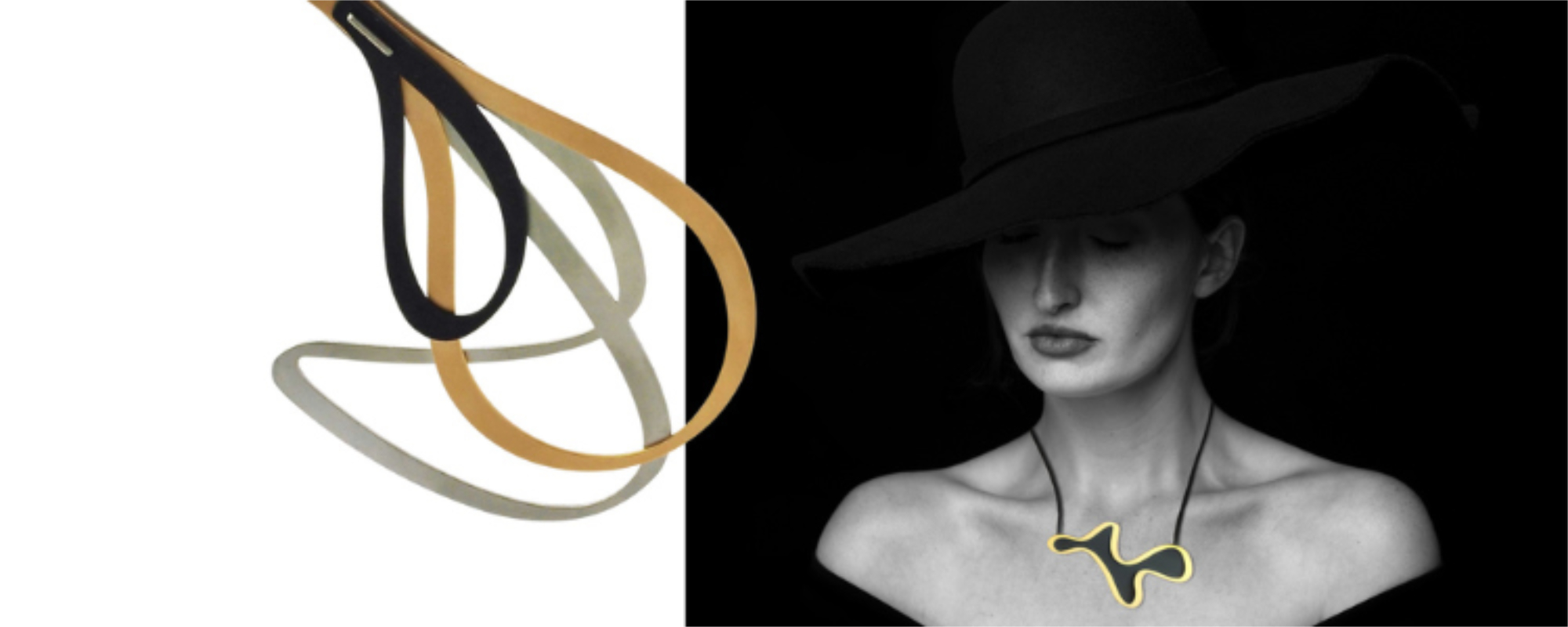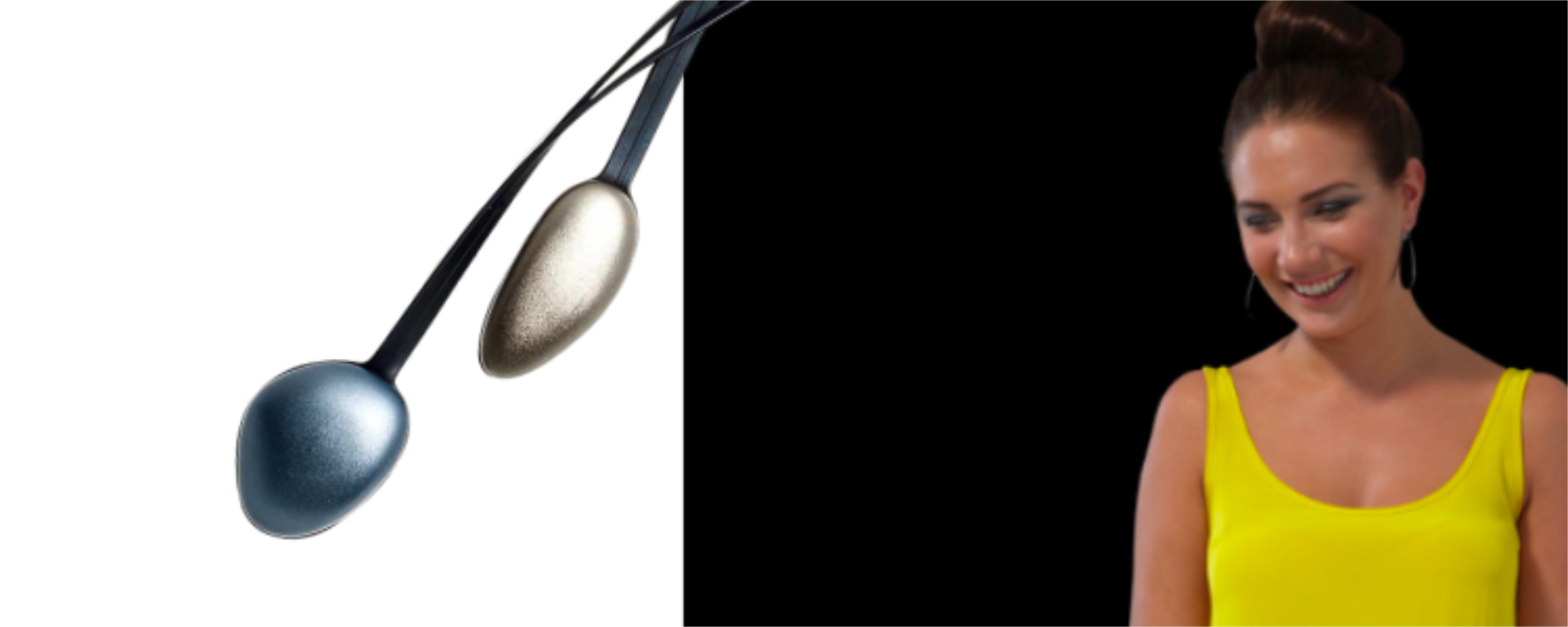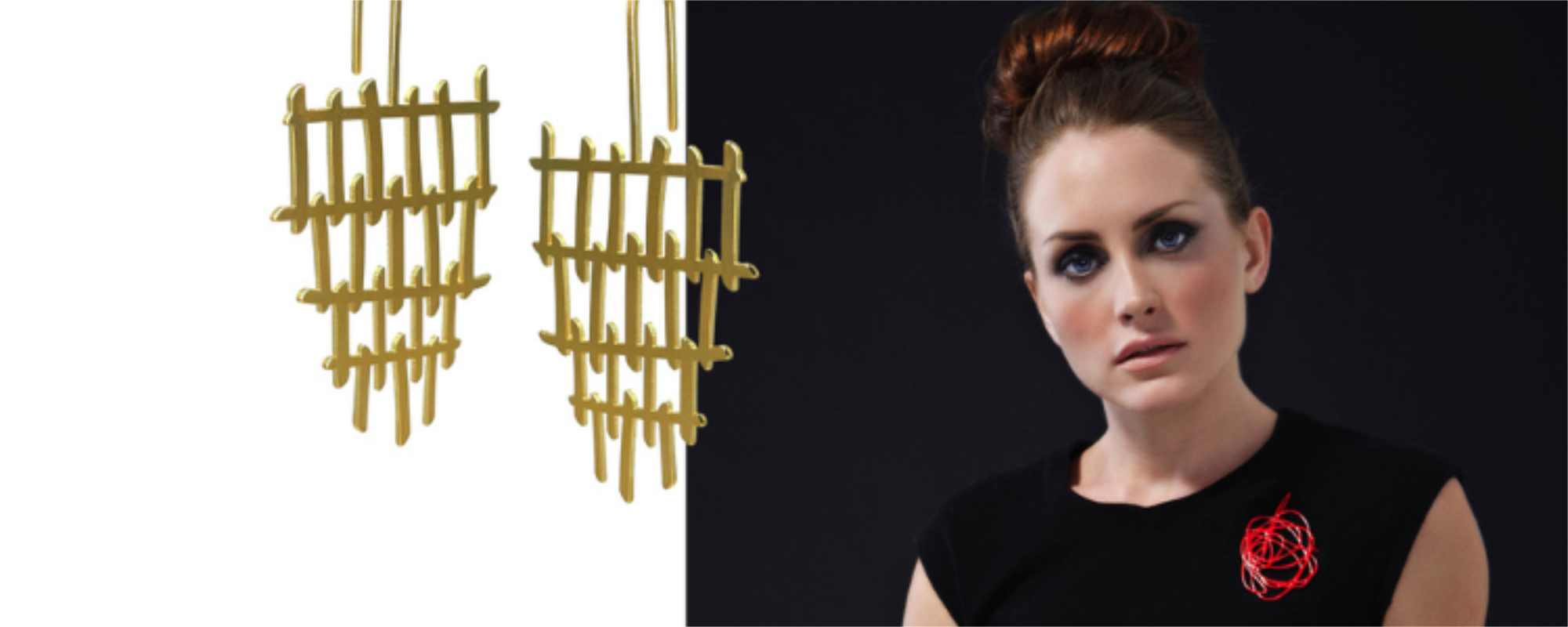LET'S PLAY DRESS UP - AN INTRODUCTION TO STATEMENT JEWELLERY

The term “Contemporary Jewellery” gets its fair share of negative press within the jewellery world. Decades ago, costume jewellery was seen as “cheap”, paling in comparison to its fine jewellery counterparts, but costume jewellery was incredibly important for many reasons. For instance, it was the first time that the working classes could afford jewellery, boosting their self esteem and self-importance.
It’s time to shed those misconceptions about vintage costume jewellery, and evaluate it’s importance within the history of jewellery as a whole. Vintage costume jewellery has had a renewed interest recently, so we decided to explore this world a little further.
What is Costume Jewellery?
Costume jewellery is also known as fashion jewellery or imitation jewellery and is widely made by fast fashion brands today. These are mainly made from simulated gemstones and cheap metals like rhinestones, lucite, pewter, silver, nickel, and was widely popular during eras of low income such as during World War I and II, and the Great Depression.
Modern costume jewellery incorporates a wide range of materials, from cubic zirconia to Gold and Silver plated metals, simulated gemstones, vermeil, plastic, acrylic and wood. Costume jewellery is largely mass produced which does also raise ethical and sustainable questions, such as who is making your jewellery, how are these materials being sourced, and will this jewellery just end up in landfill?
A History of Costume Jewellery
Costume jewellery as a term first occurred in the 1920’s just as the world was pulling itself out of the first World War. People turned to parties, frippery and excess as the economy boomed, with mass produced jewels becoming the rage. This was echoed by Coco Chanel who regularly wore her costume synthetic pearls with her real Pearls.
At first, costume jewellery was designed to look like heirloom jewellery of its past, however, it soon became brighter and bolder, creating its own signature style and look. Costume jewellery of the 1920’s simulated the classic architectural Art Deco forms, creating chunky angular bangles and outlandish geometric necklaces.
Yet costume jewellery itself has been around since the 18th century as Paste jewellery was common among the Georgians and Victorians. Paste jewellery was first invented by George Frederic Strass in 1724, which emulated the natural twinkle and luminosity of Diamonds. Not to mention in 1892, Austrian jeweller Daniel Swarovski developed his own signature rhinestone, one that has become synonymous with both luxury and affordable jewellery.
The costume jewellery that we recognise today truly came into its own after the second world war, as there was a surplus of inexpensive materials. What’s more, there was a rise of the new middle class, a class that had greater spending power amongst their peers and who wanted affordable jewellery. The war effort’s need for Platinum and alloy metals meant that many designers started working with Rose Gold and Yellow Gold pieces, and pieces became more feminine with three-dimensional styles.
What’s more, the rise of Hollywood film stars and celebrity culture greatly impacted the clothes and jewellery industries. For the first time, if you liked an outfit or piece of jewellery worn by an actress in a film, you could buy a cheaper replica.
Of course, like most fashion and jewellery industries, this mass production has come at both an environmental and human cost. For instance, toxic chemicals and materials have been found within mass produced jewellery designs, including lead and cadmium. Not to mention, much of costume jewellery today is bought from online jewellery manufacturers and wholesale retailers, and if supply chains aren’t transparent, people don’t know if they are directly contributing to cheap and unethical labour that exploits third world countries.
Costume jewellery today is everywhere, but it is now known as fashion jewellery. Many fast fashion brands take inspiration from trends and catwalks, creating jewellery that looks just like the high-fashion luxury equivalent, but for less. The rise of body modification has opened up new avenues for jewellery altogether, from belly button piercings to multiple earlobe piercings.
Should I buy Costume Jewellery?
With this in mind, especially regarding both the ethical and environmental concerns, you may question - should you even buy costume jewellery at all?
In the past few years, there have been a monumental mental shift and change towards what we consume and buy, with searches for sustainability on Google dominating other market trends. It has come as a surprise to many people that our individual imprint on this planet is greater than we initially thought.
Jewellery trends today come and go, and the cyclical jewellery movements of the past are just a reflection of this. Buying into trends comes with its own risk, as will you wear it with its “out of fashion”? Changing our thought process when it comes to buying isn’t easy, but it can be done.
Before buying into a trend, consider whether you are buying jewellery just to be “trendy” or does it accord with your personal style. If it is the latter, then try to find jewellery brands that make jewellery from repurposed materials, are independent or have transparent and ethical supply chains.
In fact, buying second hand, antique and vintage jewellery is a more sustainable purchase as it doesn’t use virgin materials or further contribute to the degradation of land.
It’s also important to know that vintage costume jewellery is incredibly collectable, especially from designer brands or earlier periods. From Rock Crystal necklaces to Paste jewels, these won’t lose their inherent value, so if you are looking at enhancing your jewellery collection, but want to make more considered purchases then this could be perfect.
Collecting Vintage and Costume Jewellery - Our Suggestions:
Unlike antique jewellery, it is much easier to find and collect vintage costume jewellery, due to mass production, more opportunity for jewellers and the larger purchasing power of the general public.
If you are thinking about collecting costume jewellery, whether antique or vintage, we decided to compile together some ideas below for you to get started. You can also browse our vintage jewellery collection to spark interest and start collecting today!
Paste jewellery
A form of costume jewellery, although with antique origins, Paste jewellery is sought after in jewellery world. In fact, during the Georgian period, the demand for glittering Paste jewellery surpassed that of precious gemstone jewellery like Diamonds as fine quality Paste was considered to be more difficult to produce. Although created from glass, the simulated gemstones have incredible brightness and clarity, meaning that they are a great way to add more than just a touch of twinkle to an outfit.
Edwardian Paste Drop Necklace, Source - Lillicoco
So, what kind of Paste jewellery styles should you purchase? Antique and vintage Paste jewellery can be found in a variety of styles, so it completely depends on your budget. For instance, a Paste riviere will be sufficiently more expensive than Paste earrings. Not to mention, it’s not just the design that affects how much Paste gemstone jewellery is, but the quality and colour of the Paste. For example, a type of Paste gem that is highly collectable is called "black dot Paste" which is where you can clearly see a “black dot” at the bottom of the gemstone. This was painstakingly hand-painted on the the bottom of the stone to imitate the culet (or bottom facet!) of old antique Diamonds, and was a great indicator of the steady hand of the jeweller or craftsman.
Georgian Black Dot Paste Brooch, Source - Lillicoco
We actually wrote a fascinating blog post on Paste jewellery, which you can read here!
Vintage Swarovski jewellery
Whether embellished on wedding dresses or crafted into your favourite characters, Swarovski has become associated with affordable luxury. In fact, today, you can probably find swarovski crystals on just about anything!
The beauty of collecting vintage branded goods is that they will always possess some form of intrinsic value. Plus, Swarovski has had a major impact on the jewellery industry as a whole in the last 100 years, so you could find some fascinating discoveries!
Although, it is notable to mention that Swarovski during the Second World War did support National Socialism, which the company today has actively sought to eradicate. With this in mind, we implore people to not collect from these time periods, unless it’s for a museum collection and is about education rather than personal adornment.
Bakelite Plastic Resin
If you want to create a bold and bright vintage jewellery collection, we suggest investing in Bakelite Plastic resin pieces. Dubbed “expressive of our own age” in the 1930’s, Bakelite was the first plastic made from synthetic components, first formulated in 1907. Not only was this a huge marker in jewellery history, but it also greatly impacted product design history too.
Art Deco Cherry Amber Bakelite Necklace, c.1920, Source - Lillicoco
The first Bakelite pieces were made in a variety of “jewelled tones”, which made them incredibly aesthetically pleasing.
Bakelite Colour Chart, Gifts to Treasure, c.1924, Source - Wikimedia Commons
Although Bakelite was first made in 1907, it wasn’t until after the first world war that it was used in creating jewellery. Before this it was used in the war effort and was made into a variety of electrical and domestic goods. Famous bakelite collections were made by Coco Chanel and Elsa Schiaparelli, and Diana Vreeland, the former editor of Vogue absolutely was obsessed by the material.
Designer Costume Jewellery
Like vintage Swarovski jewellery, designer costume jewellery will always possess inherent value, especially if you have a penchant for brands. For instance, the earliest Chanel and Dior pieces are collected by museums around the world.
From Givenchy to Tiffany and Co, Dior, and Van Cleef & Arpels, that are a myriad of brands to source and choose from. Notable and sought after collections include Dior’s aurora borealis rhinestones, Chanel logo pendants and earrings, and Van cleef & Arples “Alhambra” collection.
Mid century Parure sets
A parure set is essentially a matching set of jewellery with earrings, necklace, bracelet, and brooches that are all made in the same style and with the same gemstones, designed to be worn together. Originating in 17th century Europe, the parure set has become associated with refined elegance and formality, a staple for brides and white tie events.
Mid century parure sets were popular among both middle and upper class women in the 1940s to 1960s. You can just think of a woman wearing a bouclé suit with a double strand Pearl necklace and spherical Pearl earrings attending luncheon with her girlfriends!
Designer Movement jewellery
The Victorian era was peppered with various artistic movements, from Gothic and Etruscan revival pieces to the Arts and Crafts movement, yet 20th century jewellery did not just have Art Deco, it had many many more.
From Modernist jewellery to studio jewellery, kitschy jewellery, maximalist jewellery and minimalism, there have been numerous movements in the last 100 years that have greatly impacted design, and have also fought for social and political change.
Below is a comprehensive list of 20th century artistic movements:
- Expressionism
- Fauvism
- Cubism
- Dadaism
- Surrealism
- Abstract Expressionism
- Pop Art
- Post Modernism
These movements, although mostly referred to in terms of art, fashion and architecture, would have moulded jewellery design too. For example, Elsa Schiaperelli’s creations are a prime example of stunning Surrealist jewellery, and the bright shapely and sinuous jewellery created both in the past and today directly come from the abstract shapes and “flatness” of fauvism.
We hope you have enjoyed reading this blog post and that you enjoy collecting your vintage jewellery creations. If you have any questions regarding your vintage, antique or contemporary jewellery, please feel free to ask us!




